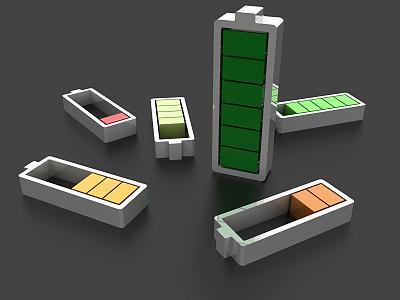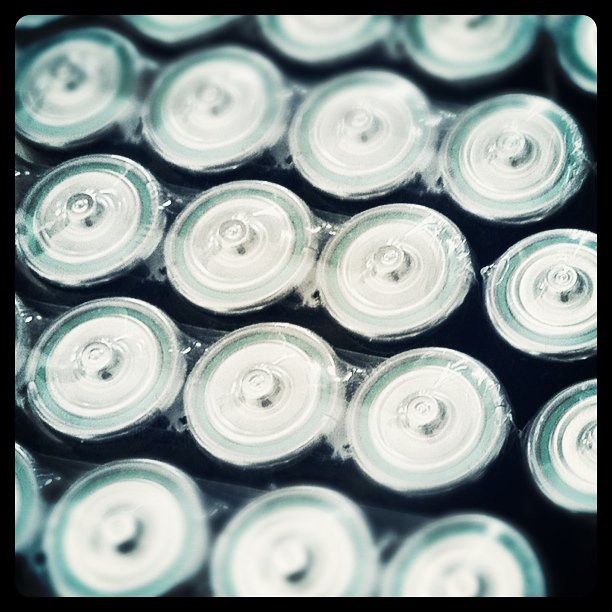Lithium Batteries vs Lead Acid Batteries
Nov 09, 2019 Pageview:1420
Lead acid vs. Lithium-ion battery comparison
Lead acid Batteries
Lead acid batteries have been on the market for over 100 years. The French physicist Gaston Plante invented them in the year 1859. Lead acid batteries are very popular now on the market and they will still be on the market for the foreseeable future. That is due to its low manufacturing cost and has an already established manufacturing base.
Lead acid batteries are a type of rechargeable batteries. They have low energy to both weight and volume ratio. Lead acid batteries have the ability to supply what is called a high surge current. That translates to that lead acid batteries have a high power to weight ratio. That combined with their low cost, makes lead acid batteries the first choice to be used in vehicles as a power source to provide the high current needed for the motor vehicles.
Lead acid batteries are also used in devices where surge current is not required or not important.
Lead acid batteries provide electrical energy via the energy released as a result of the chemical bonding of the H+ ions coming from the acid with the O2- ions coming from Lead oxide. This chemical reaction produces high electrical energy.
The net energy released per mol in Lead acid batteries is approximately 400KJ, which is equal to the formation of 36 grams of water.
Li-ion Batteries
The British Chemist M. Stanley Whittingham first proposed using Lithium to make batteries in the year 1970. Whittingham used electrodes made from Titanium Sulfide and Lithium. Whittingham rechargeable lithium battery could never be made practical as it was very expensive to make in the first place in the 1970s.
It was the year 1991 when Sony announced its new product the lithium-ion battery. Since then, the commercial production of lithium-ion batteries has been performed. This invention allowed the manufacturer to produce cell phones at a much smaller scale.
Lithium-ion batteries are of all shapes and sizes nowadays. However, no matter the size or the shape of the battery they all look the same inside. In any given Li-ion battery pack there are certain things that are present:
· Lithium-ion cells. They can either by cylindrically shaped like the conventional AA batteries or they can be prismatically shaped.
· Temperature sensors to monitor the temperature of the battery. Overheating can have catastrophic results.
· Voltage converter and Regulator circuit. This is to maintain safe levels of the voltage and the current inside the battery pack.
· Voltage tap, which acts as a monitor for the energy capacity of each individual cell inside the battery pack.
· Battery charge state monitor. Which is a small computer that handles all the charging process. It makes sure the batteries are charged as quickly and as safe as possible.
· An additional, optional shielded connector is sometimes present inside the battery pack, it allows the power and information to flow in and out of the battery pack.
When charging or even during the usage of the battery, if it gets too hot, the computer (Battery Charge State Monitor) will shut down the power flow in an attempt to cool things down. If you try to use your device while in this hot state, this computer will prevent you from using it, and will even prevent you from powering on the device itself.
The capacity of the lithium battery and the lead acid battery
Lead acid batteries
Lead acid batteries have the tendency to lose capacity at high discharge rates. According to Peukert's law; for a lead acid battery as the discharge rate increases, the battery's usable capacity is decreased. The lead acid battery's capacity is measured by the current that is needed to fully discharge it in a span of 20 hours. If your device or application has a discharge current that exceeds those 20 hour rates, then your lead acid battery's capacity will be significantly reduced.
Lead acid batteries are sized to 50 % depth of discharge in many applications. That is done in order to increase the life span of the battery. This process takes up twice as much space and costs extra.
Lithium-ion batteries
Due to the technology in the Li-ion batteries, they have a capacity that will remain constant for a long time no matter what your discharge rates are.
Lithium-ion batteries have a much larger usable capacity than that of the lead acid batteries. Moreover, the lifespan of a Lithium ion battery is way more than that of a lead acid battery.
Depending on how you are going to use your batteries, lithium-ion batteries though offer a significantly lower operational cost than those of the lead acid batteries.
Efficiency of lithium battery and lead acid battery
Lead acid batteries
As mentioned Lead acid batteries are sized to 50 % depth of discharge in many applications. That is done in order to increase the life span of the battery. This process takes up twice as much space and costs extra. This makes the lead acid batteries a less efficient choice than the Li-ion batteries.
There are various stages for the charging algorithm of the lead acid batteries. These steps are to ensure the safety of the lead acid batteries and for maximizing the batteries' life span. It is designed to slowly charge the lead acid battery at lower voltage levels, which is because the deeper the lead acid battery is discharged the higher its internal resistance becomes. However, all these steps make the charging process a slow process, which is not very efficient especially when compared to alternatives like the Li-ion batteries.
Lithium-ion batteries
Lithium-ion batteries have a high level of efficiency thanks to its technology. They are 99 % efficient and offer higher usable capacity at the exact same Amp-Hour rates. A smaller, lower capacity Li-ion battery will achieve the same results as a huge lead acid battery. That saves up space, cost, and charging time are less.
When it comes to efficiency, Li-ion batteries are a perfect choice, they offer small charging time, relative to lead acid batteries. They are smaller in size and weight. And most importantly, they have a higher lifespan than any lead acid battery. They are efficient and more easy to handle.
The lifespan of lithium battery and lead acid battery
Lead acid batteries
Lead acid batteries have a life span of approximately 500 to 1000 cycles. This is translated to approximately one to one and a half years of usage.
Lithium-ion batteries
Lithium-ion batteries have an estimated life span of 2000 to 5000 cycles. That translates to approximately two to three years of usage, which is almost double the lifespan of lead acid batteries.
- Prev Article: Li-ion Battery Maintenance
- Next Article: How To Recharge The Lithium-Ion Battery
Leave Message
Hottest Categories
-
Hottest Industry News
-
Latest Industry News













